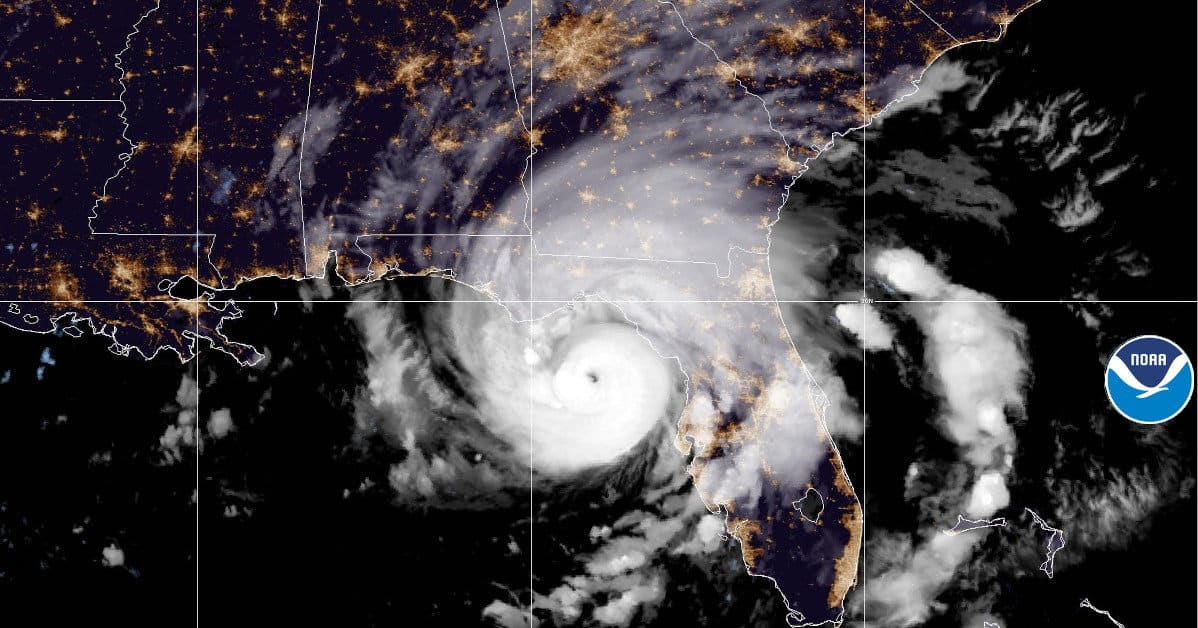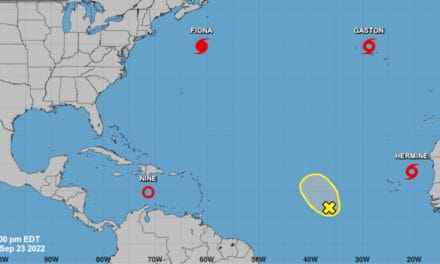Hurricane Idalia reached Category 4 in the early hours of August 30 before it made landfall on Florida’s Big Bend.
NOAA Satellite Imagery
Cedar Key Under Water
Damage & Destruction at Horseshoe Beach and Perry
Category 4 Major Hurricane Idalia made landfall on Florida’s Big Bend with 125-130 MPH sustained winds and higher gusts. Cedar Key was under water. Cedar Key, with an elevation of just 10 feet above sea level, appeared completely underwater in a video posted by Jim Cantore. Idalia made landfall on the Big Bend at seven Wednesday morning.
Free 10-Year Warranty on Generac Home Standby
The National Hurricane Center advisory at 5 AM EDT Wednesday morning issued hurricane warnings for the East Coast between Altamaha Sound Georgia to Edisto Beach South Carolina. As of 4:39 EDT, Idalia was still a hurricane located over southeast Georgia with sustained winds of 75 MPH. Tropical-Storm-force winds encompass an area 350 miles wide, or 175 miles from center, with hurricane-force winds to 25 miles from center. Over 800,000 (estimate) people in Florida were without power as the number of outages continues to climb.
The August Blue Moon, (a blue moon is the second full moon in any month) combined with a high tide and the category 4 winds added to the storm surge with devastating impacts.
On Twitter, images and video of Horseshoe Beach, Cedar Key, and Perry Florida highlighted the destruction of this powerful storm. As of 11 am EDT, the NHC storm surge forecast remained at 12-16 feet from Yankeetown to the Ochlocknee River.
Hurricane Idalia unleashed dangerous storm surge and flash flooding as it made landfall in Florida's Big Bend today. pic.twitter.com/9S6o98kwNm
— AccuWeather (@accuweather) August 30, 2023
Many areas of the Big Bend are experiencing catastrophic flooding due to impacts from Hurricane #Idalia.
— FL Division of Emergency Management (@FLSERT) August 30, 2023
Please do NOT walk, wade or drive through floodwaters as they can hide a variety of dangers. ⬇️
For more info & updates, visit https://t.co/nfDMe4H80e. pic.twitter.com/K8lgieReCm
Combine Offers on Generac Generators: 10% Off and a FREE 10-Year Warranty Promo August 30-September 11. Up to $1735 Value. 🌀 ⛈ ❄ #PowerOutage#Preparednesshttps://t.co/LiqGVkiki1 pic.twitter.com/tKxo468VjU
— Norwall PowerSystems (@NorwallPowerSys) August 29, 2023
Water as far as the eye can see! #Idalia Cedar Key, FL pic.twitter.com/7D6rXfMMax
— Jim Cantore (@JimCantore) August 30, 2023
Hazards Remain after Hurricane Idalia Passes
Even after the hurricane has passed beyond the horizon, hazards remain. Hidden in the floodwaters are electrical hazards, waste products, chemical leaks, debris, and displaced wild animals, including snakes and alligators.
Driving through floodwaters is dangerous. The water could hide a sinkhole or missing bridge that swallows your car and you with it. Water moving faster than it appears can sweep away a car and take it into deeper water within seconds. It only takes six inches of moving water to knock a person off their feet and just 12 inches will carry a car downstream.
Turn Around—Don’t Drown
As the winds and floodwaters recede, residents without power will turn to portable generators for electricity and BBQ grills for cooking food.
- Never run any generator or other engine indoors. Carbon Monoxide Kills.
- BBQ Grills are for outdoor use only and present the risk of fire and carbon monoxide poisoning indoors.
- Place generators a minimum of 10-20 feet from the home and other buildings. Garages and sheds, even with doors and windows wide open, are not a safe space to run a generator.
- Food in refrigerators begins to spoil four hours after the power goes out, freezers in 12-24 hours. Use your generator to keep your food fresh.
- Avoid flash fires—Allow the generator to cool for 5-10 minutes before refueling with gasoline. It’s a good time to check the oil and top it off—but don’t overfill. Remember that portables need an oil change every 25-100 hours.
- Only drink bottled water—after a storm, tap water may contain dangerous pathogens.
Communication Tip: Having trouble getting through on your phone? Send a text message. Texts often get through when a voice call can’t.
Finally, check on your neighbors, especially the elderly or disabled. They may need help and not know it or have enough supplies to get through the next week.
Watch as a marina in Florida is overtaken by progressive flooding and storm surge caused by Hurricane Idalia. https://t.co/j5cDIwNTDV pic.twitter.com/m61LPjSsft
— CBS News (@CBSNews) August 30, 2023
Follow these generator safety tips:
— FEMA Region 4 (@femaregion4) August 30, 2023
⚠️Keep generators outside at least 20ft from homes and garages.
⚠️ Never plug them into a wall outlet or main electrical panel.
⚠️Keep the exhaust pointed away from your home.#Idalia pic.twitter.com/MIBR4UB6Lb
Zero Cat. 4-5 #hurricanes on record have been within 100 miles of Idalia's current location. #Idalia has just reached Cat. 4 intensity with max winds of 130 mph. pic.twitter.com/W3TlPY3BOZ
— Philip Klotzbach (@philklotzbach) August 30, 2023
Over 1.5K federal staff are on the ground supporting #Idalia efforts. We deployed 540 search & rescue teams & provided millions of meals & liters of water. We will continue to stay in close contact with our state partners to address any immediate needs.
— FEMA (@fema) August 30, 2023
➡️https://t.co/1tLCck1Vwv pic.twitter.com/2LVo3dWeTu
Stay aware of the dangers that remain after a storm has impacted your area. This is NOT the time to let your guard down. Nearly half of hurricane fatalities occur after the storm. #Idalia https://t.co/5TAe1XfiXW pic.twitter.com/8JxGMJ6kGi
— National Weather Service (@NWS) August 30, 2023

















